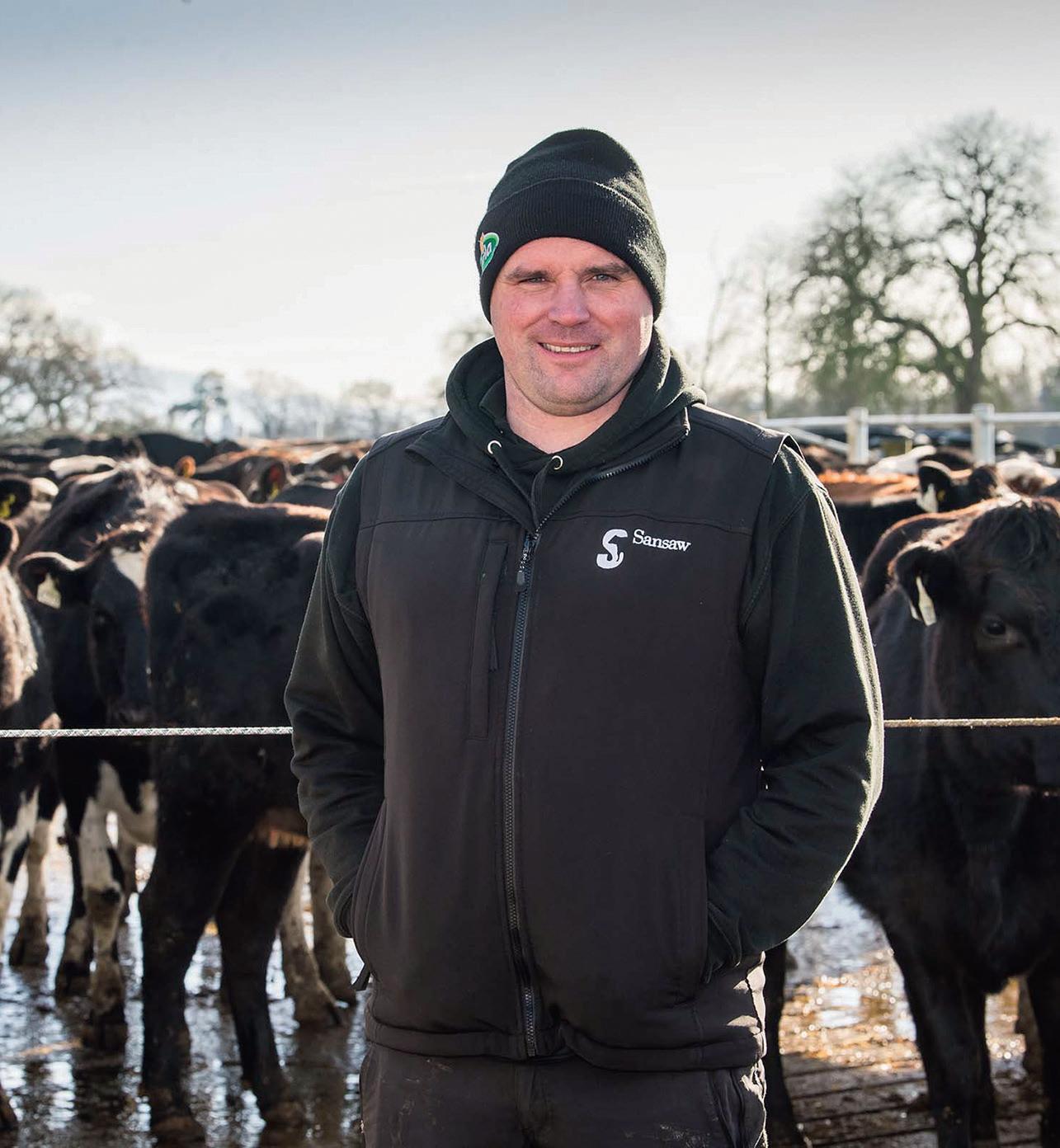
3 minute read
Teamwork drives large-scale dairy farm
Recent developments at Sansaw Dairy in Hadnall, Shrewsbury, has included the building of new cubicle sheds, which means the business does not have to rely solely on out-wintering of the 1,600-cow herd.
Farm manager Breiffni Daly says while he is a fan of out-wintering as a system which puts less reliance on resources such as straw and labour, it is also very weather-dependent and the farm had little in the way of back-up.
In the past, the whole herd had been out-wintered on fodder beet and baled silage. Today, all the youngstock and a proportion of the herd is out-wintered.
In 2019 a 1,200-cow shed, complete with 900 cubicles and loose housing space for a further 300 cows, was built.
Looking ahead, Mr Daly says they are considering putting up extra buildings. He says: “Over the next three to five years we are looking at extending the yard to fit another 600 cubicles.
“Another shed would give us the option to indoor or outdoor winter the cows, as if needed the cows could all be brought-in. We currently do not have the option to do this.”
Mr Daly says another reason for building the £1 million housing facility was to significantly tighten up the dry periods and provide calving space on the unit instead of on a sister farm.
This has allowed Sansaw to milk at least once a day all year round. Before this, they would dry off cows in December and January.
Mr Daly says: “This has improved productivity and is easier from a management perspective for both the herd and the workforce. It also helps our cashflow.”
Diet
Despite the new building, cows are still on a forage-based diet at housing, with cows feeding from three new selffeeding silage pits, which have been positioned between the cubicle sheds.


The pits provide 90 days’ worth of silage, with analysis showing the silage provides 11.5MJ/kg of dry matter of metabolisable energy (ME).
Mr Daly says: “The silage is ideal for our type of cows and the ME level helps reduce milk fever.”
A string is used to stop cows from trampling silage.
Mr Daly says: “We have found this needs to be positioned 19 inches out from the face and 32in off the ground to allow the best feeding techniques. The cows receive a small amount of concentrates at milking, with 500750kg fed annually and the youngstock receive some corn.”
Performing well off their forage-based diet, cows are producing 4,850 litres at 6.4 per cent butterfat and 3.85 per cent protein.
However, Mr Daly is aiming to reach 5,000 litres.
Due to cows being out-wintered, the milking in the spring is labour intensive, says Mr Daly.
“We have four people in the parlour; three are wiping and dipping to help keep the udder clean. The fourth is taking the clusters off. As we go into summer when it is drier, there are two in the parlour, as we need only one person wiping and dipping teats.
“But udder health and hygiene are paramount to Sansaw, so this method keeps problems to a minimum.”
As a result of this attention to detail in the parlour, they have only had a handful of mastitis cases across the herd.
Sexed semen from LIC is used alongside beef semen and a small amount of conventional dairy semen. The aim is to breed heifers at 15 months and 550 heifer calves are kept each year as replacements.
Spring 22 quarter pg blue.qxp_Layout 1 28/04/2022 15:21 Page 1
Mr Daly says: “All bulls are picked on estimated breeding values. We use
Quality mixer
Self-propelled and single, twin and triple auger trailed feeders with capacities from 5m3 up to 46m3 with a wide range of specications and options, including unique options to suit all your livestock TMR needs.

... Quality mix
Powerful mixing augers with adjustable knives ensure thorough mixing of all types of feed, including bales. Gentle mixing, consistent ration quality.
...... Quality assured
The patented EDS discharge system provides an extremely consistent, uninterrupted loose ow of forage to both sides if necessary, even without the optional cross conveyors or elevators.
Friesian genetics on the Jersey-bred cows and cross-bred cows are put back to similar breeding.”



Hereford and Aberdeen-Angus beef semen is used and these beefsired calves are sold at Shrewsbury and Market Drayton marts, along with some private sales to produce an average price of £380 per calf.


In 2020, due to Covid-19, an onfarm sale of the calves was held, with prices averaging at £420.
Mr Daly says he has been keen to try continental genetics and has used 150 straws of continental beef sires this year and is looking forward to seeing how these calves perform.

Calving
Calving takes place over a 10-week block. This sees nine temporary members of staff join the team to share the workload.
Youngstock rearing is headed up by Joanna Cornes, with this arrangement taking some pressure off Mr
North: Paul McUrich - 07810 040100 / paulmcurich@gmail.com
South: John Molton - 07947 719985 / john.molton@bvl-group.de www.bvl-farmtechnology.com
07594244303










